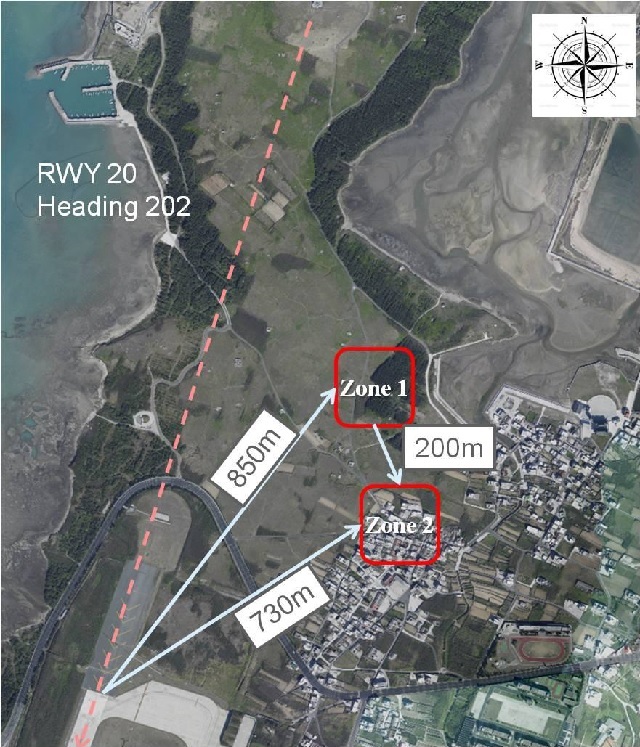An investigation into the fatal crash of an
The disclosure appears in a detailed report by Taiwan’s Aviation Safety Council (ASC) into the
Examination of information retrieved from the aircraft’s flight data recorder (FDR) shows that at 1905:51 local time, GE222 overflew the missed approach point at 176ft, where the minimum descent attitude is 330ft. It then leveled off for ten seconds and continued descending toward runway 20, as the crew conducted a VOR approach.
The CVR transcript reveals that at 1905:58 the captain asked if the runway was in sight. The first officer did not respond for nine seconds, at which time both crew members declared the runway was not visible.
At 1906:11, the aircraft had drifted well to the left and was at 72ft. At this point, both pilots called for a go around and advanced the power levers. Two seconds later, however, an unidentified sound was recorded, and at 1906:18 both the FDR and cockpit voice recorders (
The report details two main wreckage zones to the northeast of the runway 20 threshold. The first zone, some 850m from the runway, comprises bushes and trees that vary in height from 4.4m to 6.5m. Investigations revealed that the

Taiwan Aviation Safety Council
Several aircraft parts were found among the trees, including the nose landing gear aft doors, radome, left-hand heat exchanger, ram air inlet, left-main landing gear door, and other parts. The aircraft flew an additional 200m before crashing into buildings in Magong town.
The report also provides full details of the crew. The 60-year-old captain, a former army pilot, had 19,000hrs on ATRs. The 39-year-old first office had over 2,000 on ATRs.
Investigators also flew on a number of TransAsia flights in order to assess the company’s safety culture. They noted a number of deviations from standard operating procedures among TransAsia crew, several related to failures to make mandatory callouts. They also conducted simulator sessions to examine how the aircraft’s enhanced ground proximity warning system (EPGWS) functions under different conditions.
The report runs to several hundred pages and provides factual information into conditions around the doomed flight, wreckage recovery, weather information, and other material related to the crash. Its publication sets the stage for analysis by accredited representatives, with a final report to be published in October 2015.
The GE222 crash killed 48 of the 58 passengers and crew aboard the aircraft.
Source: Cirium Dashboard



















